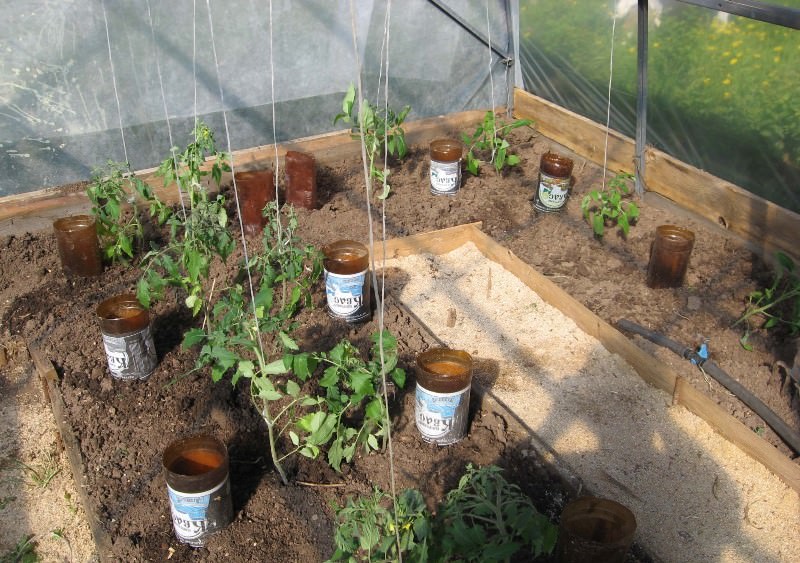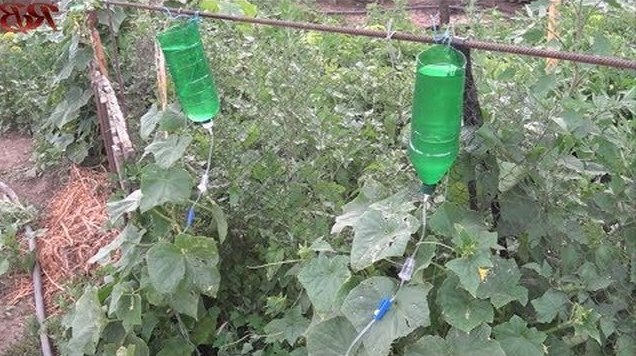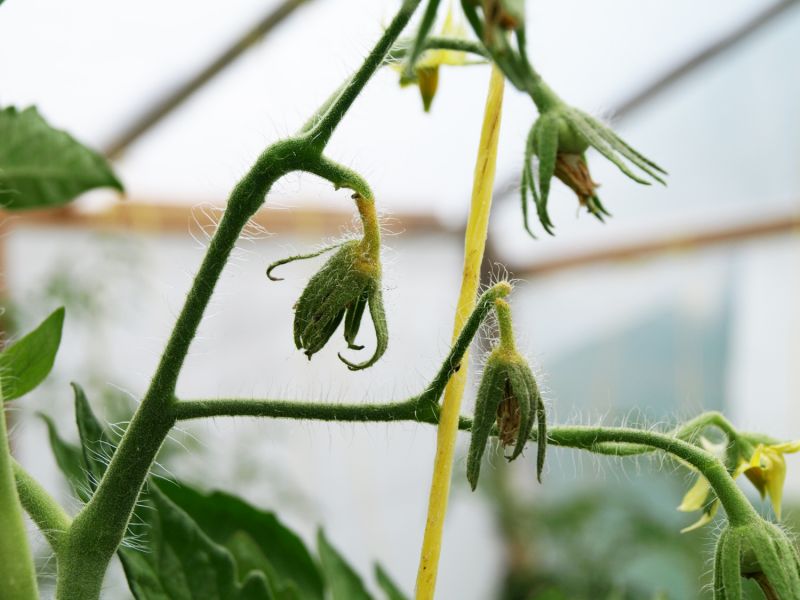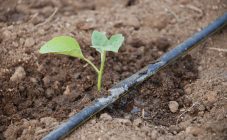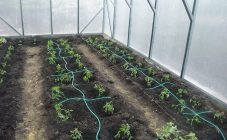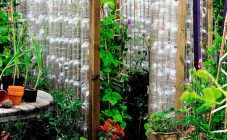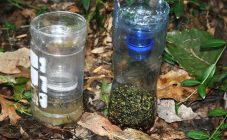Content:
The original method of watering tomatoes through plastic bottles made this process more convenient and easy. Water from the container goes straight into the roots gradually over several days, so that the owner of the site can leave it for several days without damaging the plants.
How to water tomatoes through plastic bottles
Growing a good harvest of vegetables is not easy. It is easy to control the thermal regime in the greenhouse, but it is necessary to regularly and carefully water the tomatoes.
For such humidification, various devices from pipes and hoses are sold; it is easier to use plastic bottles. This method requires used containers of any size: 1.5, 2, 5 liters or more. Color and shape don't matter. It is recommended to discard containers after chemical solutions so that residues do not get into the soil under the plants.
Why watering tomatoes in a greenhouse through plastic bottles is good:
- The material is always at hand in any household;
- The process of creating a humidification system is simple, anyone can handle it;
- The costs are minimal;
- Water enters the soil slowly and evenly, automatically. This makes it possible for a person to be distracted for several days, to do other work;
- If one container fails, it is easy to replace it with another;
- There is no excess moisture and condensation in the greenhouse, this protects tomatoes from late blight and viral diseases that appear in conditions of high humidity;
- Reduced water consumption;
- Weeds do not grow around the plant, a crust does not form on the surface of the earth;
- You can feed crops by adding fertilizer to the water in the bottle;
- Water does not get on the leaves of tomatoes, sunburns are excluded;
- The water has the same temperature as the air in the greenhouse.
Disadvantages:
- Cannot be used in large areas;
- There is a danger of inadvertently damaging the roots of the plant;
- It is necessary to ensure that the soil does not clog the holes, wrap the bottles with old tights;
- Sometimes additional soil moisture is required if there is not enough drip.
What you need to cook:
- empty plastic containers,
- a thin sharp awl or a nail with pliers,
- a sharp knife and scissors,
- old tights.
Bottle placement methods:
- neck down;
- upside down into the ground;
- hanging bottles;
- horizontal placement;
- humidification through the tubes.
Neck down
To water one plant, it is enough to take a one and a half liter or two liter bottle. Unscrew the cover. Use an awl or a hot nail to make 2 - 4 holes 1.5 - 2 mm. The number of holes depends on the quality of the soil. For a light sandy one, 2 holes are enough, for a loamy one you need 4.
Screw on the bottle cap tightly. Cut off the bottom, but not completely, so that you can close the bottle and reduce moisture evaporation. Wrap the bottom with a piece of tights so that the earth does not get hammered into the holes.
Dig in the container next to the plant, pour water, close with a half-cut bottom. Test if watering is proceeding correctly. Adjust if holes are too small or large and water does not flow well or flows out too quickly. Prepare the required number of bottles and bury them near each plant.
Upside down
In a plastic bottle for watering tomatoes, make holes on one side, which will be turned towards the plant. Sometimes it is buried between two tomato bushes, then holes must be made on both sides.
Holes must be made in the lid, otherwise water will not go into the holes, and the empty container will flatten. Bury the bottles upside down. Pour water into the necks through a funnel or a narrow hose.
Observe watering, adjust and you can leave the cottage for a week.
Hanging bottles
Not everyone likes this method:
- suspended containers and devices for hanging them clutter up the greenhouse space;
- dripping water washes away the ground near the roots;
- water gets on the leaves and there is a risk of sunburn;
- moist earth around the roots and weeds grow;
- in the greenhouse, the level of humidity rises, prerequisites for late blight disease are created.
It is recommended to hang the bottles very close to the ground to reduce the negative effects.
Horizontal placement
For cucumbers, peppers, cabbage, which need intensive watering, you need to take five-liter bottles, plastic flasks. Make small holes on one side. Screw on the bottle cap. Dig it near the plants in a horizontal position, pour water through the pre-cut hole on the upper side. It is not necessary to bury the whole bottle, the water will be heated in the sun.
Watering with straws, rods
This method is more time consuming. You need to collect and prepare rods or thin tubes for a cocktail. Insert a match on one side of the rod, make a hole with a thin needle. Insert the other side of the rod into the bottom of the bottle and reinforce with plasticine. Hang the container and fill with water.
What plants can be watered in this way:
- tomatoes;
- pepper;
- eggplant;
- cabbage;
- cucumbers.
All these crops, except for tomatoes, need to be irrigated from time to time from a watering can, because they like to moisturize the leaves and need a lot of moisture.
The advantage of such hydration and feeding is that the plants receive water and nutrition constantly and systematically, and not from time to time, when the owners have the time and opportunity to do this.
It is important to figure out how to plant tomatoes with watering bottles, because there is a danger of damaging the roots. To avoid this, it is recommended to dig in containers together with tomato plantings. The seedlings are still small, the roots have not grown. Dig holes for planting plants and make holes nearby (up to 15 cm) for water bottles. They are dug into the ground with the bottom at a right angle, the floor is placed with the neck down at an angle of 45 degrees. Several plants are fed in this way.
Fertilizing tomatoes through plastic bottles must be combined with watering, this will further facilitate the work of gardeners. Dispense mineral fertilizers in small necessary doses in dry form into each container, water will gradually dissolve and add to each plant.
Such subsoil watering and feeding is also used for shrubs. For each bush you need 3 containers of 2 liters dug around the plant.
All the methods considered can be used in the arsenal of the summer resident. There is no need to spend money on the purchase of ready-made systems, if you can quickly, efficiently and cheaply make them yourself. Such a system is useful for plants, facilitates cultivation and frees the owners of summer cottages from the need to live in the country or constantly come to it.
